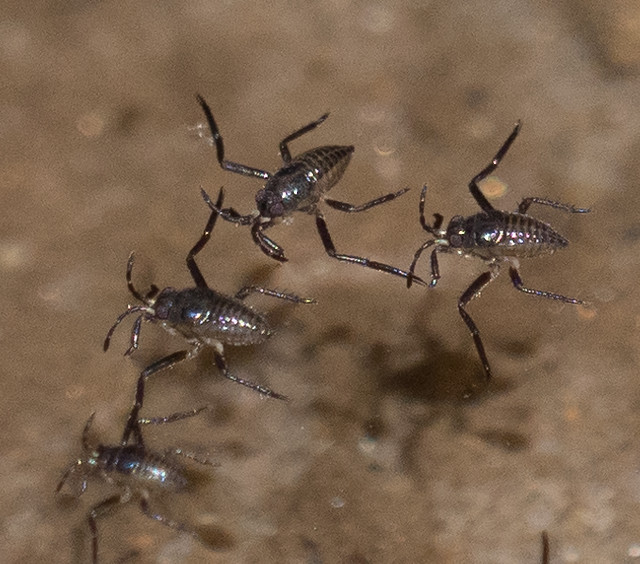Map Snapshot




11 Records
Description
"Very swift gliders that might be mistaken for flies skimming just above the water. It is not unusual to find more than one species at a collecting site; they have the most sophisticated mesotarsal arolium of all the striders." (BugGuide)
Seasonality Snapshot
Source: Wikipedia
| Rhagovelia | |
|---|---|

| |
| Rhagovelia distincta | |
| Scientific classification | |
| Domain: | Eukaryota |
| Kingdom: | Animalia |
| Phylum: | Arthropoda |
| Class: | Insecta |
| Order: | Hemiptera |
| Suborder: | Heteroptera |
| Family: | Veliidae |
| Genus: | Rhagovelia Mayr, 1865 |
| Diversity | |
| at least 390 species | |
| Synonyms[1] | |
| |
Rhagovelia is a genus of smaller water striders in the family Veliidae. There are at least 390 described species in Rhagovelia.[1][2][3][4][5]
-
Rhagovelia can be gregarious and form swarms. Morton Arboretum, Illinois
Evolution
[edit]Origins
[edit]The origins of the genus are among water striders of Veliidae family without propelling fans on their legs.
Evolution from water striders
[edit]Genes 'geisha' and 'mother-of-geisha'
[edit]The duplication of genes, called by researchers 'geisha' and 'mother-of-geisha', caused evolutionary creation of propelling fans on middle pair of water strider's legs which in its turn has made able for species in the genus to walk across more fast-flowing and turbulent streams.[6]
See also
[edit]References
[edit]- ^ a b "Rhagovelia Report". Integrated Taxonomic Information System. Retrieved 3 May 2018.
- ^ "Browse Rhagovelia". Catalogue of Life. Retrieved 3 May 2018.
- ^ "Rhagovelia". GBIF. Retrieved 3 May 2018.
- ^ "Rhagovelia Genus Information". BugGuide.net. Retrieved 3 May 2018.
- ^ Ross H. Arnett (30 July 2000). American Insects: A Handbook of the Insects of America North of Mexico. CRC Press. p. 278. ISBN 978-0-8493-0212-1.
- ^ Emilia Santos M, Le Bouquin A, Crumiere A, Khila A (2017). "Taxon-restricted genes at the origin of a novel trait allowing access to a new environment". Science. 358(6361) (6361): 386–390. Bibcode:2017Sci...358..386S. doi:10.1126/science.aan2748. PMID 29051384. S2CID 44180496.
External links
[edit] Data related to Rhagovelia at Wikispecies
Data related to Rhagovelia at Wikispecies
